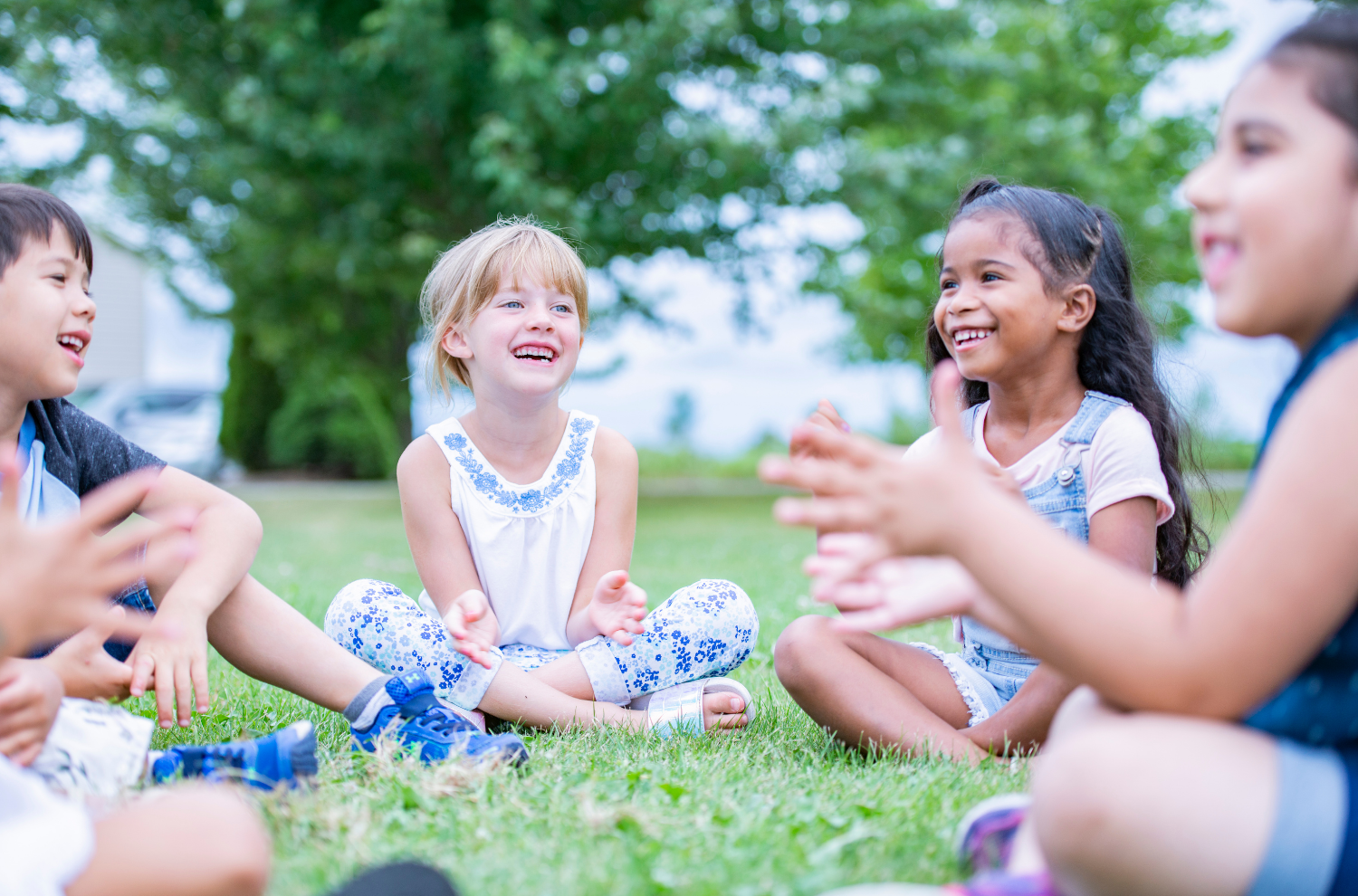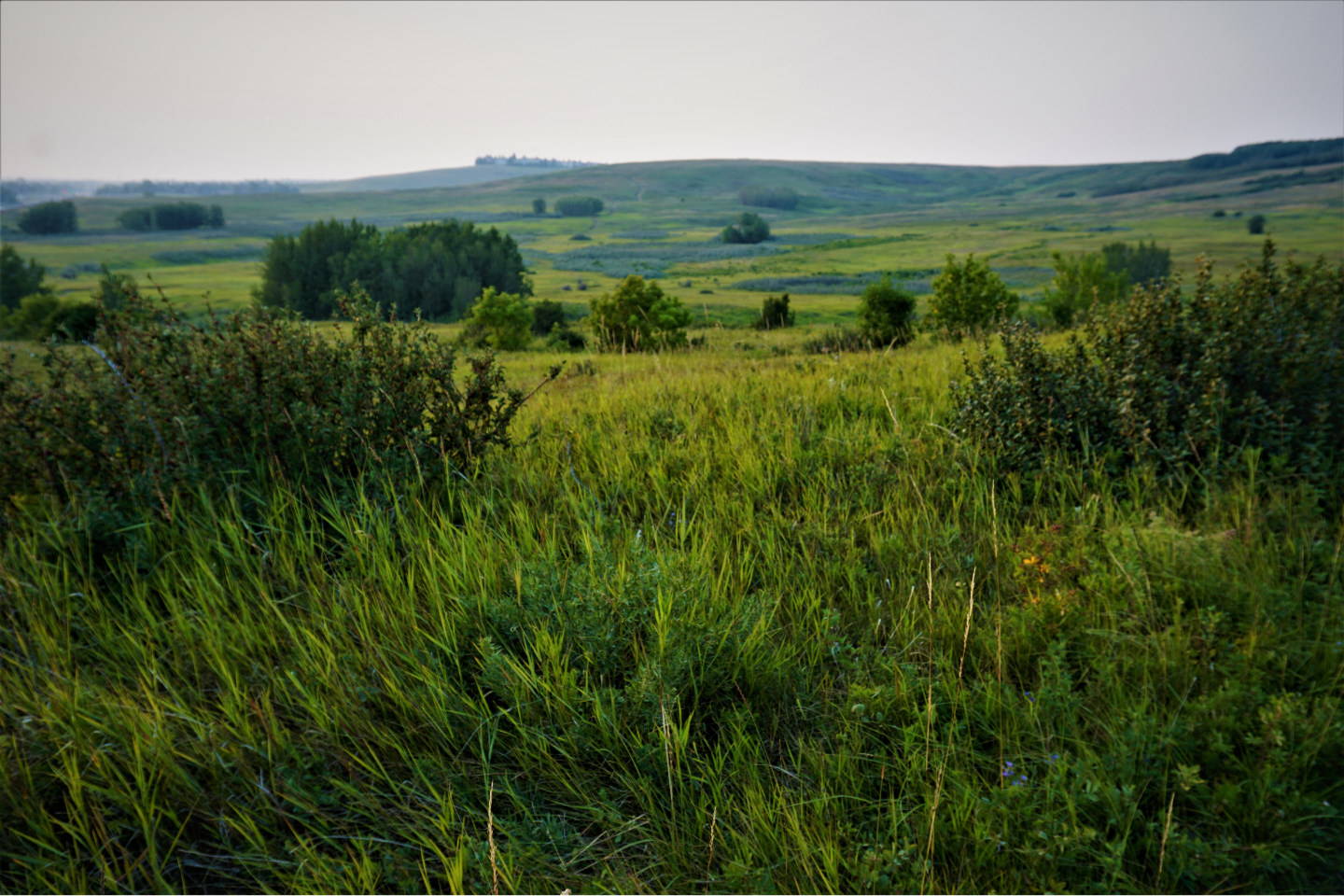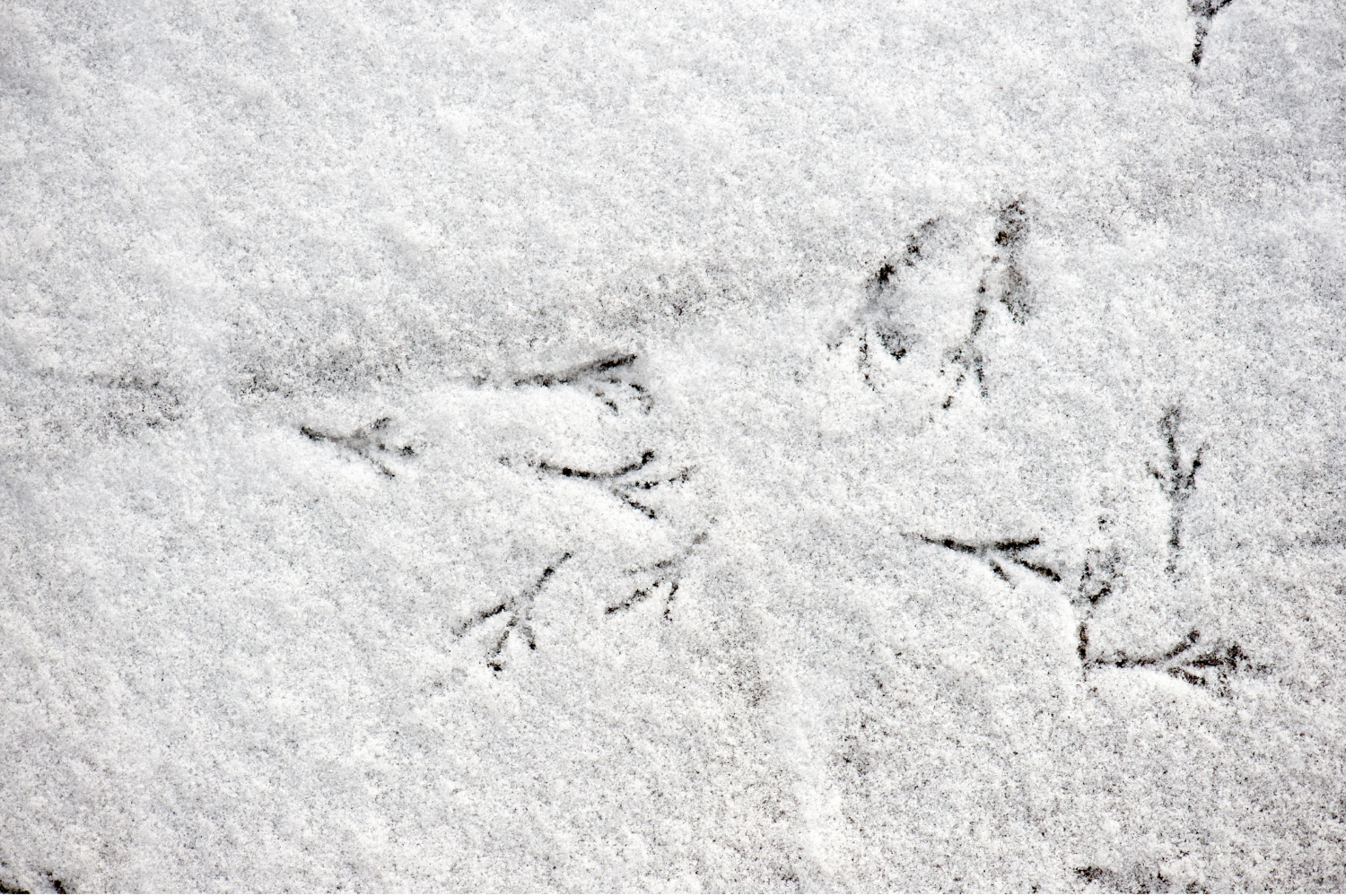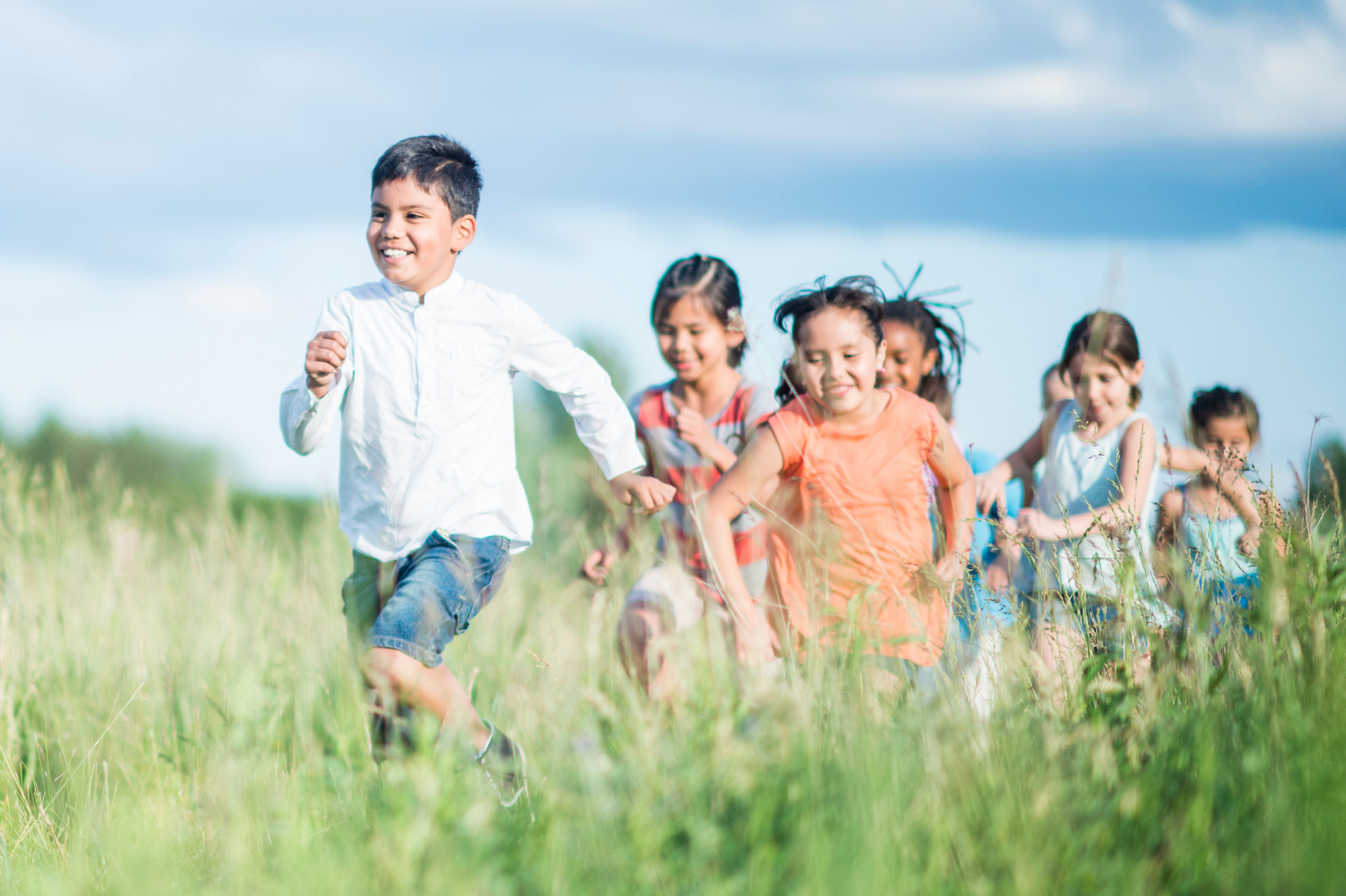Children are not always given the opportunity to connect to nature. Many spend less time outdoors than their parents’ generation did. By taking learning outside of the classroom, we can help students deepen their connection to the natural world. Research shows this has benefits for well-being, self-regulation, learning engagement, and stress reduction, in addition to fostering pro-environmental attitudes and behaviours (Chawla, 2015; Li & Sullivan, 2016; Nisbet et al., 2009; Skinner & Chi, 2012; Wells & Lekies, 2006). It feels good to spend time outside!

Some might think of nature as anything outside of our human-built world, found only in parks or outside of cities. In reality, nature is everywhere: nature is the air, the clouds, the rivers, the soil, the plants, the animals and their beating hearts, including our own. Not only do we need nature to survive, we are nature!
Honouring Indigenous Peoples

As we bring students outside for learning, it is important to honour the diversity of Indigenous communities who have lived here for countless generations. These include the the Îethka (Stoney Nakoda) – comprising the Chiniki, Wesley and the Bearspaw; the Niitsitapi (Blackfoot) – including the Siksika, Piikani, and Kainai; the Tsuut’ina Nation; as well as the Métis people of Alberta - Region 3.
There is much wisdom and knowledge held in these Indigenous cultures. By virtue of their having lived here in enduring relationship with the grasses and rivers; mountains and moose; and aspens and chickadees, since time immemorial, their perspectives on relating to the wider natural world are essential. This includes Indigenous approaches to education that involve experiential learning on the land.
As we turn to Indigenous people to gain a wider perspective, we can also acknowledge the ways that colonization has disrupted their ability to thrive and carry out their traditional ways of being on the land. This can lead to important discussions and actions on the path toward reconciliation.
Learning Outdoors

As teachers, you have a lot on your plate; you’re already stretched thin as it is. Rather than considering outdoor learning as one more “should” on your to-do list, consider this an invitation to give see how it might enhance the good work you’re already doing inside the classroom. There’s no need to limit outdoor learning to a few field trips a year, or to those balmy days in May and June. Calgary is one of the sunniest places in the country. If you and your students are prepared, you can enjoy learning in the outdoors every month of the school year.

Some teachers are fortunate to have parks or other natural areas near their schools. Others need to be more creative in order to help their students deepen their connection to nature. Whether it is snow falling from the sky, a bird flying overhead, or a weed poking through a crack in the pavement, there are always opportunities around us to connect with nature.
Where to begin?
Because so many children today are spending little time outdoors, any opportunity to bring them outside for learning will be of benefit. Take a look at your lesson plan and see if there might be something that could be just as easily taught outdoors. Loose parts in nature (sticks, leaves, rocks, pinecones, dandelions, etc.) can be wonderful tools for teaching patterns and measurement in Math. They can also be used as characters or settings for students to create their own stories in Language Arts. Invite students to connect to the world outside with all of their senses: this can inspire their artwork. Take students outside to learn about the history of these lands - can they imagine what it was like here hundreds of years ago? The Science curriculum offers more direct connections to learning outdoors: clouds, weather, light, shadow - the list goes on! There are endless possibilities for taking learning outdoors, once you start to look. See how many ways you can find to infuse the curriculum with experiences in the outdoors.

When you’re outdoors with your students, you may find their attention drawn to an unexpected natural event or visitor. This is what can make outdoor learning so rich. Don’t be afraid to drop your lesson plan and follow the students’ curiosity as you follow a new route of inquiry together. Invite your students to connect with what they are experiencing with all of their senses. Ask them to consider how what they are noticing links back to what you've been learning about inside the classroom.
Practical Tips for Outdoor Learning

There is a saying that suggests there is no such thing as bad weather, only inappropriate clothing. As residents of the prairies, we take that saying with a grain of salt. Here, there are days where it is simply not safe to be outdoors with students. That said, aside from those few deeply cold days, there are hundreds of others that can be enjoyed if we are dressed appropriately. It is often we adults who are more reluctant to spend time outdoors in less-than-ideal conditions than our students. Make sure you’re prepared for the weather, and you’ll be in a much better position to guide your students through their outdoor learning journey.
Clothing

Try to set the expectation early on with both parents and students that learning outdoors will be a regular part of the school year. The more time they spend outdoors, the more likely they will be to come prepared. Not all families will have the means to provide appropriate outdoor gear for their students. In addition, in spite of all your efforts, many children will arrive at school unprepared for the weather. Many teachers keep a collection of extra snow pants, jackets, tuques, mitts, boots, etc. that can be lent out to those who need them. These can be collected from items left too long in the lost and found, at thrift stores, garage sales, as well as donations from families whose children have outgrown their own gear. The best advice for staying comfortable outdoors is to layer up. By having a thermal base layer that sits close to the skin and outer layers that ward off the wind, you can stay comfortable on colder days. These layers can then be removed when needed.
Get to know the space yourself

Before taking students out into the schoolyard, it is important to do a survey yourself. Are there any potential hazards to be aware of? Are there any delightful surprises you don’t want your students to miss? What are the boundaries that you will set for your class when heading into your outdoor learning space?
Setting Expectations for Outdoor Learning

Your students likely know what is expected of them when they enter the classroom or the learning commons. When going outdoors for learning, however, they may not; many will have only spent time outdoors for recess. Explain to your students why you are taking learning outdoors and work together on creating guidelines for this time. Let them know what the boundaries are, as well as what signals you will use to get their attention and to gather them in. Just like with any new routine, it may take time for everyone to adjust to expectations. Start by taking learning outdoors for shorter periods and build up gradually to a full day.
Just Before Heading Outside

Prepare students for their time outside by ensuring they visit the bathroom first. Before heading out, remind them to bring everything they will need with them, including snacks, water, outdoor gear, sit pads, etc. Many teachers keep their own outdoor bag packed and ready for teaching in the outdoors. This will include items such as a whistle, or other noisemaker, for getting students’ attention; a first aid kit and any medications the students may need; any writing or learning supplies you plan to use; your sit pad; your outdoor gear; and your own snacks and water bottle.
Try Fresh-air Fridays!

Once students are accustomed to learning outdoors for more extended periods of time, you can start bringing them out for a full school day. There are several schools in Calgary that incorporate Fresh Air Fridays or Wellness Wednesdays into their schedules: they set aside one day a week, or every other week, for a full day of outdoor learning. Being intentional about taking learning outdoors by incorporating it into your school calendar can make it easier to follow through.
Other Tips

When gathering the students in a group, have them sit or stand with their backs to the sun so they don’t have to squint when watching you speak.
Be prepared to use your best outdoor teaching voice – you may be competing with wind, traffic, and other outdoor noises.
Always leave your students wanting more. Be mindful of how your students are faring and bring them back inside before they have reached their limits of comfort.
Grab-and-Go Lesson Plans

In order to support teachers who are looking to bring students outdoors for a full day of curriculum-connected learning, Thimbleberry offers four Big Day Out resources that each connect to a theme. These were created with full respect for what teachers have on their plates and are available to simply ‘grab and go’; minimal prep is needed and few, if any materials. These full-day lesson plans also include additional projects and activities related to the theme, that can be undertaken back inside the classroom.
Check out our four Grab-and-Go, Big Day Out programs. One for each season:
Spring - My Butterfly Teacher
Summer - Wildflower Wonders
Fall - Planted in Place
Winter - Solstice Skies - coming soon!
These are prototypes just waiting to be brought outside with your students. Let us know how they work for you!
References
Chawla, L. (2015). Benefits of nature contact for children. Journal of Planning Literature, 30(4), 433–452. https://doi.org/10.1177/0885412215595441
Li, D., & Sullivan, W. C. (2016). Impact of views to school landscapes on recovery from stress and mental fatigue. Landscape and Urban Planning, 148, 149–158. https://doi.org/10.1016/j.landurbplan.2015.12.015
Nisbet, E. K., Zelenski, J. M., & Murphy, S. A. (2009). The nature relatedness scale: Linking individuals’ connection with nature to environmental concern and behavior. Environment and Behavior, 41(5), 715–740. https://doi.org/10.1177/0013916508318748
Skinner, E. A., & Chi, U. (2012). Intrinsic motivation and engagement as “active ingredients” in garden-based education: Examining models and measures derived from self-determination theory. Journal of Environmental Education, 43(1), 16–36. https://doi.org/10.1080/00958964.2011.596856
Wells, N., & Lekies, K. (2006). Nature and the life course: Pathways from childhood nature experiences to adult environmentalism. Children, Youth and Environments, 16(1), 1–24.

